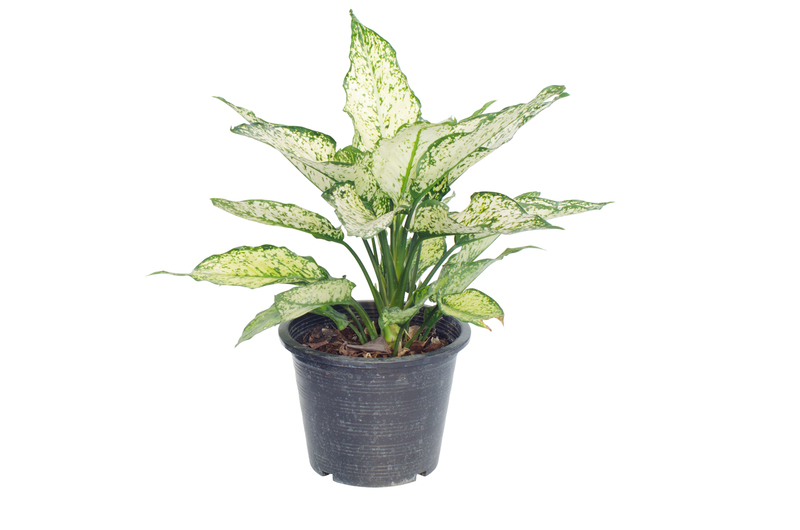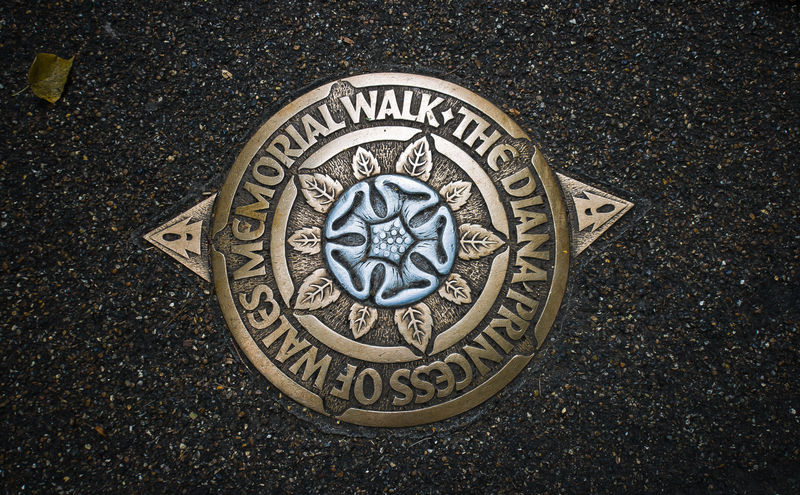Outdoor Zen Garden Designs for Peace and Tranquility
Posted on 20/08/2025
Outdoor Zen Garden Designs for Peace and Tranquility
In today's fast-paced world, finding moments of peace and tranquility can be challenging. One timeless method for cultivating inner calm and relaxation is by crafting an outdoor Zen garden. These beautiful, minimalist landscapes offer a tranquil escape right in your backyard, inviting mindfulness and meditation. If you're seeking inspiration for your own serene garden sanctuary, this comprehensive guide will explore the essential principles, layout ideas, and design tips for creating outdoor Zen gardens that exude peace and tranquility.
What is an Outdoor Zen Garden?
Sometimes called a Japanese rock garden or karesansui, a Zen garden is a carefully designed outdoor space intended to inspire harmony, clarity, and reflection. While traditional Zen gardens originated at Japanese temples hundreds of years ago, their timeless design elements--such as raked gravel, stones, moss, and tranquil water features--make them perfect for contemporary homes and outdoor areas, both large and small.
At the heart of these gardens is a focus on minimalism and balance. Outdoor Zen gardens for tranquility and relaxation strip away excess, using rocks, plants, and simple structures to create a peaceful atmosphere that fosters meditation and connection with nature.

The Core Elements of Zen Garden Design
Designing your own outdoor Zen garden involves understanding its core elements, each chosen to evoke peace and stillness:
- Rocks and Stones: Symbolizing mountains or islands, strategically placed rocks create a foundation for Zen garden layouts.
- Sand or Gravel: Often raked in rippling patterns, these represent water and encourage contemplation.
- Moss and Minimal Plants: Soft greenery adds subtle color and natural texture to the garden's calm atmosphere.
- Water Features: Ponds, trickling fountains, or even symbolic dry stream beds enhance serene outdoor Zen garden designs.
- Bridges and Pathways: Stone paths and wooden bridges invite slow, mindful movement through your tranquil space.
- Ornamental Fixtures: Pagodas, lanterns, or bamboo fences give subtle, cultural character without overcrowding the design.
Each component should be selected and arranged with intention, as every detail contributes to the overall peace and tranquility of the outdoor Zen sanctuary you're creating.
Design Principles for a Tranquil Zen Outdoor Garden
When designing an outdoor Zen garden for peace and tranquility, consider these timeless principles:
- Simplicity: Keep forms clean and uncluttered; less is more in Zen philosophy.
- Asymmetry: Achieve visual harmony by placing objects off-center or in odd-numbered groupings, mimicking nature's randomness.
- Naturalness: Embrace organic lines and natural materials for authenticity and balance.
- Enclosure: Use fences, hedges, or bamboo screens to create a sense of seclusion and privacy.
- Balance: Blend contrasting elements--such as rock and water, texture and smoothness--to nurture a serene atmosphere.
A well-designed outdoor Zen garden can make even the smallest patio or the largest yard feel like a peaceful haven, encouraging relaxation and mindfulness.
Creative Outdoor Zen Garden Design Ideas
Ready to get inspired? Here are several outdoor Zen garden design approaches--from classic to contemporary--each offering a unique path to tranquility and harmony:
1. Classic Japanese Rock Garden
The traditional Japanese Zen garden, often found in temple grounds, uses carefully placed rocks and raked gravel to mimic the natural world. Create islands of stones within a bed of raked white sand or gravel. Use a wooden Zen rake to sculpt swirling or linear patterns, symbolizing water in motion. Place moss or small patches of grass around the rocks for a subtle touch of color.
2. Miniature Zen Courtyard
Even with a compact space, you can design a mini outdoor Zen sanctuary. Frame a corner of your deck, patio, or balcony with bamboo screens or low walls. Arrange a few larger rocks--each chosen for unique shape and texture--on a base of gravel. Add a small bowl of water or a tabletop fountain to enhance the sensory experience with gentle sounds.
3. Zen Garden Pathways
Craft a winding gravel or stepping-stone path through your garden, encouraging a slow, meditative stroll. Flank the walkway with clumps of moss, tufts of grass, or low shrubs such as Japanese boxwood. A pathway can visually divide your garden into "zones," inviting moments of pause and contemplation.
4. Water-Influenced Zen Oasis
Add a pond, reflecting pool, or bamboo water spout for a soothing auditory component. Whether real or symbolic, water brings movement and reflection, crucial components for outdoor Zen garden tranquility. Consider floating lilies or a single stone island for an extra touch of peace.
5. Bamboo and Stone Zen Retreat
Bamboo fencing, accenting, or planting can create privacy while enhancing the Asian-inspired feel of your garden. Pair bamboo with irregularly shaped stones, statues, and perhaps a wooden garden bench for a restful retreat.
6. Moss-Draped Zen Shade Garden
Transform a shady area with beds of soft, velvety moss underfoot. Interspersed with large stones and a sprinkling of ferns, this simple design promotes calm and is perfect for low-light corners of your yard.
7. Modern Minimalist Zen Garden
For contemporary homes, blend Zen principles with a modern minimalist aesthetic. Use geometric shapes, monochromatic color palettes, and metal or concrete features. Clean lines, uncluttered spaces, and the selective use of greenery allow tranquility to shine.
Choosing Materials for Your Zen Garden
Selecting the right materials is key to setting the proper tone in your outdoor Zen garden. Here are popular choices:
- Gravel and Sand: Crushed granite, river pebbles, white sand, or fine gray gravel are ideal for raking and simulating water.
- Rocks and Boulders: Select stones in natural shapes with interesting textures--granite, basalt, or river rocks are traditional favorites.
- Moss and Shade Plants: Moss varieties like sheet moss or cushion moss, as well as Japanese forest grass, ferns, and sedges.
- Bamboo: Use living bamboo, bamboo fencing, or accent pieces for screening and vertical interest.
- Timber: Weathered wood for pathways, benches, and bridges, offering rustic charm.
- Garden Fixtures: Stone lanterns, simple statuary, or small wooden gates evoke traditional Japanese gardens.
_Always prioritize natural, durable materials_ that will age gracefully outdoors, contributing to the overall harmony of your retreat.
Plant Choices for Outdoor Zen Garden Serenity
While Zen gardens are famous for their restrained plantings, using thoughtful greenery can enhance tranquility. Consider these classic and contemporary options:
- Mosses: Sheet moss, cushion moss, and rock cap moss create lush carpets and soften stone features.
- Japanese Maple: Elegant foliage and vibrant seasonal color bring a subtle drama and focal point.
- Bamboo: Tall, sweeping canes provide privacy and emotive movement in gentle breezes.
- Boxwood and Evergreen Shrubs: Neatly pruned forms add structure with year-round greenery.
- Ornamental Grasses: Hakone grass or sedges lend a graceful, flowing effect near water features or rock groupings.
- Ferns and Shade Perennials: Athyrium, Japanese painted fern, and hostas thrive in damp, shady Zen gardens.
Choose plants with soft, muted, or monochromatic hues to keep the focus on serenity rather than bold, distracting color.
Creating the Perfect Layout: Step-by-Step Guide
- Assess Your Space: Measure the available area and consider sunlight, slope, and privacy needs.
- Choose a Focal Point: Decide where to draw the eye--a group of stones, a small statue, or a pond can serve as the center of tranquility.
- Sketch a Basic Plan: Use asymmetry and balance. Arrange main elements (rocks, sand, pathways) before adding finishing touches.
- Install the Base Layer: If using gravel or sand, create a level foundation with landscaping fabric underneath to prevent weeds.
- Arrange Rocks and Stones: Place larger stones first, allowing time to step back and evaluate their placement before moving on.
- Introduce Water or Moss: If desired, install water features or spread moss in shaded areas.
- Add Plants and Accents: Plant selected greenery, and place lanterns, benches, or bamboo screens according to your design.
- Rake and Refine: Create raked patterns in gravel or sand--straight lines for stillness, swirls for movement.
_Take your time with each step_ and embrace patience--designing an outdoor Zen garden is as much about the journey as the finished result.
Maintaining Peace and Tranquility in Your Zen Garden
Outdoor Zen gardens are designed for low maintenance, but periodic care will help sustain their tranquil ambiance. Here's how:
- Rake patterns in sand or gravel regularly; this is a meditative task in itself.
- Remove debris and fallen leaves to keep the space uncluttered.
- Trim moss and shrubs sparingly to maintain simple, natural shapes.
- Clean water features weekly to prevent algae and ensure clear, calming sounds.
- Prune bamboo carefully to control spread and keep privacy screens looking tidy.
By building a simple care routine into your schedule, you'll protect your garden's serenity and enjoy an oasis of peace for years to come.

Frequently Asked Questions About Outdoor Zen Garden Designs
Is a Zen garden spiritual?
While Zen gardens draw on Buddhist traditions, you do not need to follow any religion to enjoy the peace and mindfulness they bring. The design principles--simplicity, balance, stillness--are universal, welcoming everyone to experience a moment of calm.
How much space do I need to build an outdoor Zen garden?
Zen gardens range from tiny tabletops to expansive yards. Even a corner patio or balcony can transform into a mini Zen retreat with a few stones, sand, and thoughtful arrangements.
Can I incorporate flowers in a Zen garden?
Traditional Zen gardens focus on evergreens, moss, and grasses to create a calm, timeless air. However, you can introduce subtle color with camellias, azaleas, or irises--choose varieties with understated blooms and soft hues to maintain tranquility.
Are water features necessary?
No--many classic Zen gardens represent water symbolically by raked gravel or sand. But if you love the sound of flowing water, a simple bamboo fountain or small pond adds another peaceful dimension.
Conclusion: Cultivate Your Own Outdoor Zen Sanctuary
Designing an outdoor Zen garden for peace and tranquility offers a unique opportunity to disconnect from stress and tune into the present moment. Whether you prefer a classic rock garden, a lush moss-and-bamboo retreat, or a sleek modern Zen oasis, the vital elements are always the same: simplicity, balance, and respect for nature's beauty. Through careful planning, intentional selection of materials, and ongoing mindfulness, your personal Zen garden will serve as a daily reminder to slow down, breathe deeply, and savor tranquility--right outside your door.
Bring serenity home today: Start with a simple design, or draw inspiration from the timeless principles shared here, and craft your own haven of relaxation and renewal.
Explore more outdoor Zen garden ideas and transform your backyard into a peaceful sanctuary--where tranquility is always in bloom.

